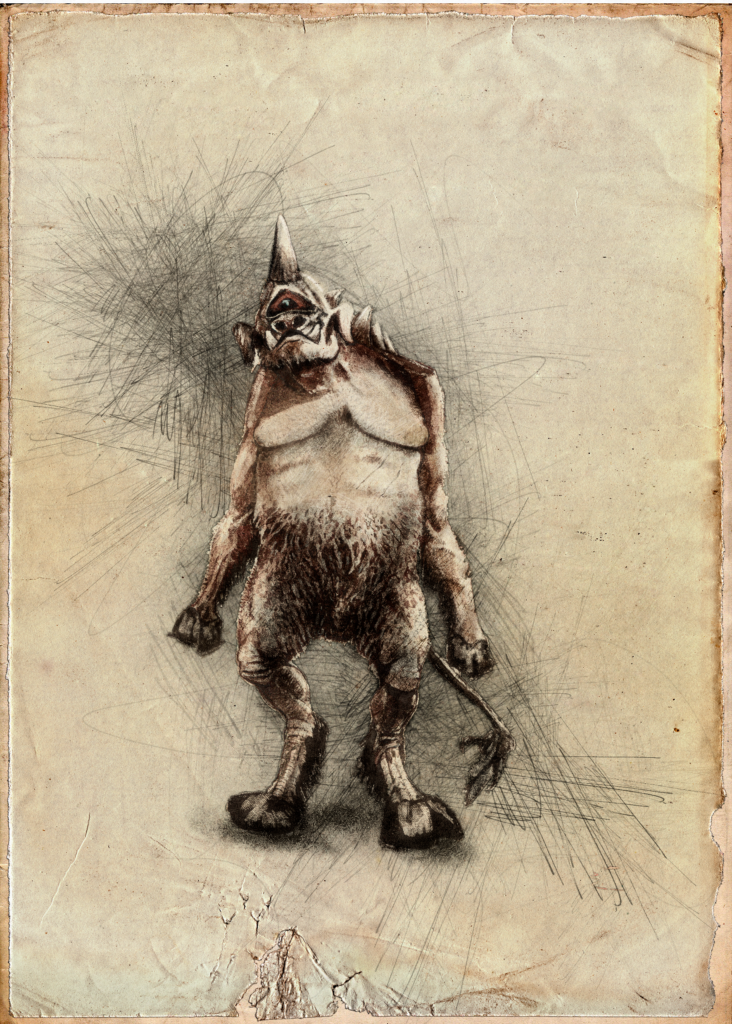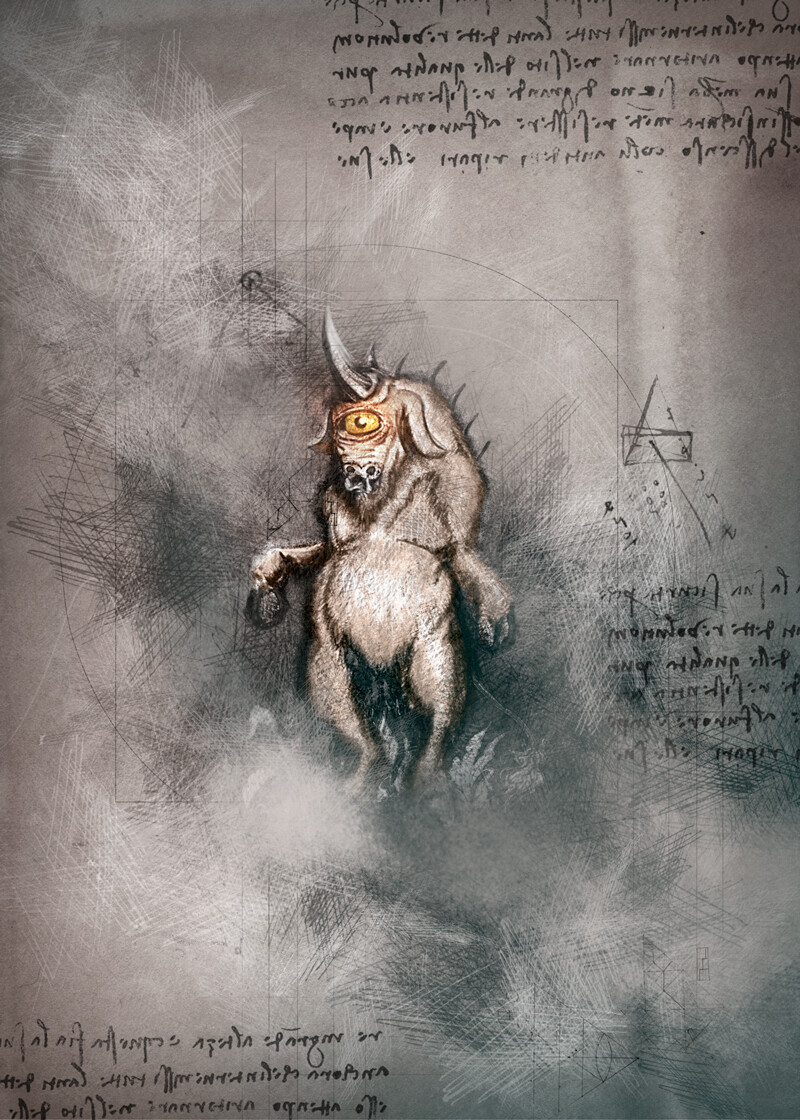Cryptozoology is a pseudo-scientific field of study, which undertakes the theories of creatures that are widely unknown to science. The myriad of creatures present within this field owes their origins to the folklore of indigenous American peoples. This includes popular cryptid lore, including Bigfoot, the Chupacabra, and Jersey Devil. Unsurprisingly the state of North Dakota also has an incredibly interesting, albeit bizarre and obscure monster of its own, known as the Miniwashitu!
Known for its harsh winters, North Dakota’s first frost can arrive as early as September, with below-freezing temperatures that stretch all the way into May. An ice sheet regularly forms atop the Missouri River during this part of the year and can extend as far as six feet below the surface. This ice sheet regularly blocks the passage through the waterway near Bismarck for at least three months each year. So, it’s no surprise that life on the plains is no picnic during the coldest months of the year, but even springtime brings its own unique dangers. (White)
Culturally Significant Water Monsters
Within the field of cryptozoology, the implication of water monsters is that they are serpents or other seafaring creatures. The Loch Ness monster, Tizheruk, Chessie, Champy, Ogopogo, and Memphre are all just a few examples of water monsters within cryptozoology. Outside of these more modern legends exists mythical creatures such as Jörmungandr, the Hydra, the Kraken, and the Leviathan. The Miniwashitu is an outlier, however, as it does not fit neatly into the same category as these other well-known cryptids.
The Mandan People
The Mandan people are believed to have settled along the banks of the Missouri River and its tributaries (White). This would have put them just south of what would become Bismarck and the Knife River, between 1100 and 1300. The Mandan people along with other Indigenous communities crafted a flourishing trade hub that stretched the region. It was a system that white fur traders took advantage of centuries later when they arrived. The river provided an easy route for trading goods. It also created an ease of access to goods that were vital for the Mandan people who were traditionally agricultural.
Seasonal Dangers & Stories Told
The trials and tribulations that the Mandan people had to withstand through the winters would have been abundant. Once the ice upon the waterways cracked, it was clear that the weather was warming. This brought much relief to the people of the region (White). That is not to say that seasonal dangers had passed. In fact, a thawing river and the breaking ice shelf upon the river would have still been quite dangerous. It’s likely that these dangers associated with the coming of spring would have been severe enough to warrant the creation of a dangerous monster who might cause the phenomenon.
Much like any other indigenous culture found across the globe, there was a reliance upon oral storytelling traditions. This tradition was the primary means of communicating cultural heritage. Oral storytelling is a less reliable method of communication across generations, but it leaves room for adaptability to change the story.
Being near a river would have been dangerous for all of the children of the tribe and in lieu of simply telling them to “stay away,” an iconic story would drive the point home (White).
Stranger Danger & the Effects of Colonialism
Tragically, by the time Gilmore had recorded the tale within his anthology of folklore, the river had taken on new dangers—ones that were no longer based in mythology (White). The introduction of white colonizers in 1782 ushered in the first wave of diseases such as smallpox and other dangers. By the time the second wave hit in 1837, the delicate nature of their human ecosystem had all but been decimated (White)
Melvin R. Gilmore & His Contributions
Cultural references to the Miniwashitu in North Dakota predate any European settlements in North America. Unfortunately, the first appearance of the Miniwashituo in modern media formats wasn’t recorded until 1921. The story was first introduced in the ethological anthropology of cultural stories as recorded by Melvin Randolph Gilmore in Prairie Smoke. Gilmore was a cultural anthropologist and the former curator for the North Dakota Historical Society (“Monsters”).
His career as a museum curator for a number of institutions spanned from 1916 to 1923 (“Monsters”). His passionate pursuit of unheard stories led him to regularly collaborate with the tribal nations in his area to record their cultural folklore (Rodenberg). Along with contributions to scientific periodicals on the culture and livelihood of the people indigenous to the Missouri River valley, he was also an authority on the Plains Indians (“Monsters”). As a result of his many contributions, Gilmore was an adopted member of the Pawnee tribe. (“Monsters”)
The Myth of the Miniwashitu
People rarely see the Miniwashitu, so there is very little information about it to this day. What does exist, exists primarily as a regurgitation of Gilmore’s original record from Prairie Smoke. Gilmore detailed the story of a beast that was known to exist “in the long ago”. Within the waters of the Missouri River, what Gilmore described was a dreadful sight to behold (Gilmore 26).
Gilmore’s informant was a second-hand witness to the last known sighting. The man witnessed the creature swimming against the current in the middle of the Missouri River. The creature crashed heavily into the ice sheet that sat upon the water. It broke it apart with its enormous body and lethal backbone. The man reported it made a “terrific roaring sound”. It was his description of the creature and what happened shortly after that caused such alarm (Gilmore 26). The informant explained that as soon as the man, “beheld the awful sight,” he lost his vision. His eyes darkened immediately. It was only by luck and a general sense of direction that the man was able to reach his home. However, soon after arriving home, he lost all sense of self and passed away (Gilmore 26).
What we know about the Miniwashitu
To witness the monster at night, one would see a brilliant fiery red streak lighting up the icy waterway. Truly a sight to behold! If one were to see the monster by day they would meet their end. They would lose their vision and hearing. They would soon become restless and begin to writhe in pain. Not until they were thoroughly insane would death kindly relieve them.
Some believe that the Miniwashitu, or water monster, still lives in the Missouri River (Gilmore 26). For those that still hold this belief, they claim that it is responsible for breaking the ice that has formed on the river come springtime (Gilmore 26).

The Appearance of the Creature
The man’s story also took into account the physical description of the monster he witnessed, so we have included it here for reference. According to his report of the creature, it’s the appearance that was most frightful to behold. The Miniwashitu was described as having an extraordinarily strange form, covered from head to toe with hair that resembled a buffalo. The hair was red in color and the creature boasted only a single, cyclopean eye. Above its eye was a single distinctive horn. The bipedal creature stands at over seven feet tall, with humanoid hands and the cloven hooves of an elk. The backbone was described as protruding out, but irregularly notched and jagged like the teeth of an old saw. (Rodenberg)
The True Nature of the Miniwashitu
As one of the creature’s nicknames would imply the Miniwashitu, or Missouri Water Monster, spends much of its time submerged in the Missouri River. This seems to be quite lucky, considering its very appearance is so horrific that it would shatter the mind of anyone who witnessed it. The story has also evolved over the centuries since it was told to assert that direct eye contact would “freeze you in perpetual fear” as you suffered to death from insanity. However, it is also said that even if you were not to directly witness it, but were to simply hear its tremendous bellow, it would still render you unable to hear again.
Of course, none of this takes into account that the creature is actually quite docile despite its grotesque nature. It’s no more a predator than the mundane proven counterpart, the buffalo. The Miniwashitu is a noted pescatarian, subsisting upon fish, plants, and grass. Aside from the supernatural side effects of being in its presence, it is quite similar to a buffalo in being protective of its territory. All of this having been said, we’re delighted to know that this creature does not seek out humans to attack—not that it would need to considering its supernatural ability to harm without confrontation. (Rodenberg)
Fear the Miniwashitu
Regardless of the fear that accompanies the beast’s presence, there is massive respect for the creature that heralds the return of spring. The role it plays in breaking up the ice shelf on the river is a tremendous relief, especially after a difficult winter. The return of open waterways means an increase in the ease of travel, as well as a more available resource of fish. (Rodenberg)
Is it likely that a legitimate creature has managed to go undocumented by zoologists and wildlife biologists for so many centuries? No, it’s not likely, but that doesn’t mean that it’s not possible. The world is still full of undocumented creatures. This water monster has such a bombastic presence, however, that it is unlikely to go undiscovered for this long.
So, if it exists, is the Miniwashitu a beast to be trifled with? Probably not, but if you’re wondering if this creature is dangerous, you’ll be pleasantly surprised to know it’s likely not going to be munching on your sullied corpse. It may, however, render you blind, deaf, and so insane that the only relief you’ll find will be in death.
For another interesting read about river monsters, check out the Curse of the River Serpent!
Works Cited
Gilmore, Melvin R. Prairie Smoke: A Collection of Lore of the Prairies. Bismarck, Columbia University Press, 1929.
“Monsters on the Plains.” High Plains Reader, Fargo ND, hpr1.com/index.php/feature/culture/monsters-on-the-plains/. Accessed 20 May 2023.
Rodenberg, Brendan. “What Is the Missouri River Miniwashitu?” KX NEWS, 13 Mar. 2023, www.kxnet.com/news/local-news/what-is-the-miniwashitu-north-dakotas-little-known-river-monster/.
White, April. “In North Dakota, the Hideous Miniwashitu Ushers in Spring.” Atlas Obscura, 5 May 2023, www.atlasobscura.com/articles/miniwashitu-missouri-river-north-dakota.

Georgia-based author and artist, Mary has been a horror aficionado since the mid-2000s. Originally a hobby artist and writer, she found her niche in the horror industry in late 2019 and hasn’t looked back since. Mary’s evolution into a horror expert allowed her to express herself truly for the first time in her life. Now, she prides herself on indulging in the stuff of nightmares.
Mary also moonlights as a content creator across multiple social media platforms—breaking down horror tropes on YouTube, as well as playing horror games and broadcasting live digital art sessions on Twitch.


